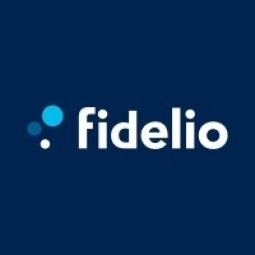公司规模
Large Corporate
地区
- America
国家
- Canada
产品
- Fidelio ERP system
技术栈
- ERP
实施规模
- Enterprise-wide Deployment
影响指标
- Productivity Improvements
- Cost Savings
技术
- 功能应用 - 企业资源规划系统 (ERP)
适用行业
- 食品与饮料
适用功能
- 离散制造
- 采购
用例
- 自动化制造系统
- 库存管理
服务
- 系统集成
- 软件设计与工程服务
关于客户
La Petite Bretonne 是加拿大魁北克省的一个知名品牌,以糕点和烘焙产品而闻名。该公司的产品是大型和小型杂货店糕点和烘焙部门的主打产品。该公司每天生产一百万个迷你羊角面包。该公司在每个工厂和部门都有一个团队来识别和优先考虑所有需要优化的业务流程和功能需求。该公司正在寻找一个能够满足其需求和目标并支持多年的 ERP 系统。
挑战
La Petite Bretonne 是魁北克著名的糕点和面包店品牌,正在寻找能够满足其需求和目标的 ERP 系统。该公司希望有一个能够处理业务现实变化并支持多年的系统。他们正在寻找一个开发人员,而不仅仅是集成商,能够根据他们的要求调整 ERP 系统。该公司还希望减少数据输入时间,将更多时间花在数据分析和战略实施上。发票回购流程对于 La Petite Bretonne 来说至关重要,他们需要一个能够有效处理此流程的系统。
解决方案
La Petite Bretonne 选择了 Commsoft Technologies 的 Fidelio ERP 系统。之所以选择该系统,是因为它能够适应公司的需求并处理业务现实的变化。该系统是在公司每个工厂和部门的团队的帮助下实施的。Fidelio ERP 系统使公司能够减少数据输入时间,而将更多时间用于数据分析和战略实施。该系统还改进了公司的控制流程,其功能包括创建采购订单(在接收时直接转换为发票)和实时库存链接。该系统还提供了改进的搜索功能,节省了大量时间。
运营影响

Case Study missing?
Start adding your own!
Register with your work email and create a new case study profile for your business.
相关案例.

Case Study
The Kellogg Company
Kellogg keeps a close eye on its trade spend, analyzing large volumes of data and running complex simulations to predict which promotional activities will be the most effective. Kellogg needed to decrease the trade spend but its traditional relational database on premises could not keep up with the pace of demand.

Case Study
HEINEKEN Uses the Cloud to Reach 10.5 Million Consumers
For 2012 campaign, the Bond promotion, it planned to launch the campaign at the same time everywhere on the planet. That created unprecedented challenges for HEINEKEN—nowhere more so than in its technology operation. The primary digital content for the campaign was a 100-megabyte movie that had to play flawlessly for millions of viewers worldwide. After all, Bond never fails. No one was going to tolerate a technology failure that might bruise his brand.Previously, HEINEKEN had supported digital media at its outsourced datacenter. But that datacenter lacked the computing resources HEINEKEN needed, and building them—especially to support peak traffic that would total millions of simultaneous hits—would have been both time-consuming and expensive. Nor would it have provided the geographic reach that HEINEKEN needed to minimize latency worldwide.

Case Study
Energy Management System at Sugar Industry
The company wanted to use the information from the system to claim under the renewable energy certificate scheme. The benefit to the company under the renewable energy certificates is Rs 75 million a year. To enable the above, an end-to-end solution for load monitoring, consumption monitoring, online data monitoring, automatic meter data acquisition which can be exported to SAP and other applications is required.

Case Study
Coca Cola Swaziland Conco Case Study
Coco Cola Swaziland, South Africa would like to find a solution that would enable the following results: - Reduce energy consumption by 20% in one year. - Formulate a series of strategic initiatives that would enlist the commitment of corporate management and create employee awareness while helping meet departmental targets and investing in tools that assist with energy management. - Formulate a series of tactical initiatives that would optimize energy usage on the shop floor. These would include charging forklifts and running cold rooms only during off-peak periods, running the dust extractors only during working hours and basing lights and air-conditioning on someone’s presence. - Increase visibility into the factory and other processes. - Enable limited, non-intrusive control functions for certain processes.

Case Study
Temperature Monitoring for Restaurant Food Storage
When it came to implementing a solution, Mr. Nesbitt had an idea of what functionality that he wanted. Although not mandated by Health Canada, Mr. Nesbitt wanted to ensure quality control issues met the highest possible standards as part of his commitment to top-of-class food services. This wish list included an easy-to use temperature-monitoring system that could provide a visible display of the temperatures of all of his refrigerators and freezers, including historical information so that he could review the performance of his equipment. It also had to provide alert notification (but email alerts and SMS text message alerts) to alert key staff in the event that a cooling system was exceeding pre-set warning limits.

Case Study
Coca-Cola Refreshments, U.S.
Coca-Cola Refreshments owns and manages Coca-Cola branded refrigerators in retail establishments. Legacy systems were used to locate equipment information by logging onto multiple servers which took up to 8 hours to update information on 30-40 units. The company had no overall visibility into equipment status or maintenance history.







